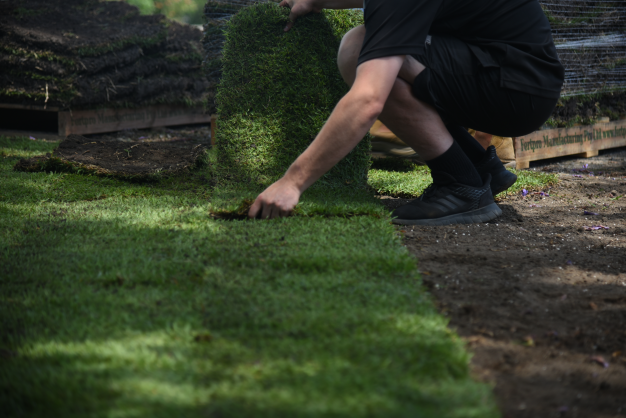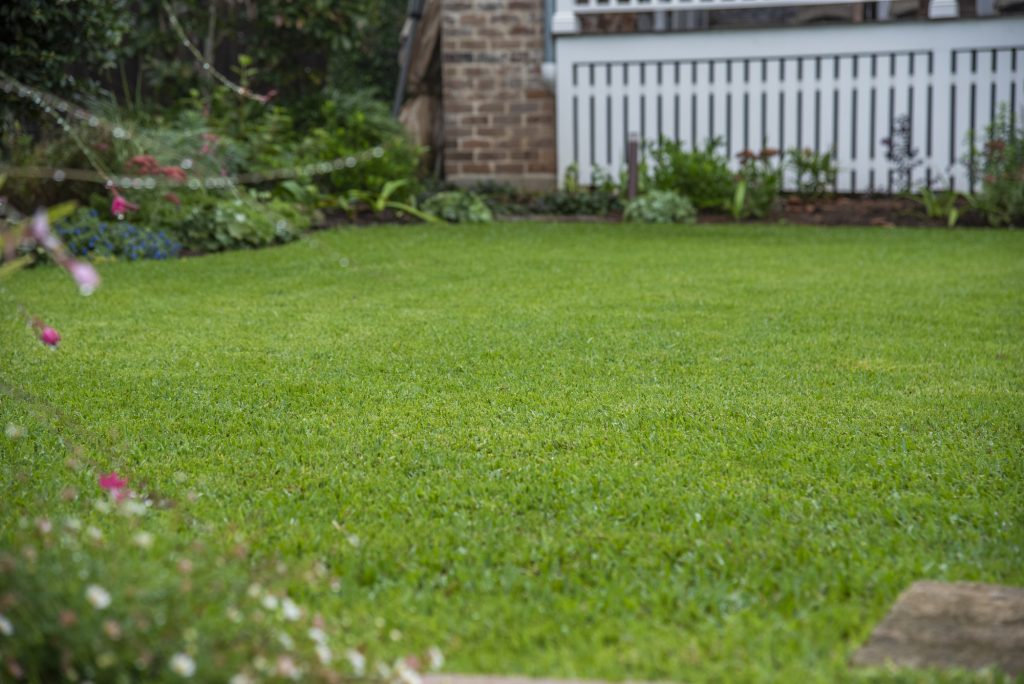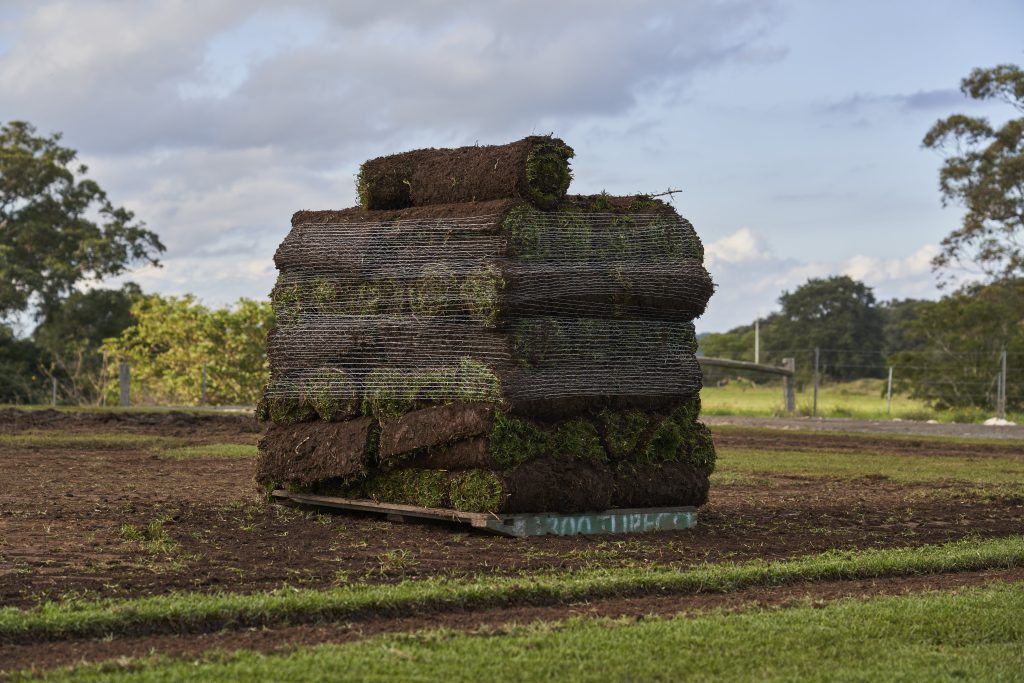What Should My Turf Look Like When It Arrives?
Congratulations! Your turf has been ordered which means you are almost ready to install your new lawn.
What should you expect when your turf arrives? Turf is a green life product. This means the turf is not always going to be uniform & have the exact same appearance. In most cases, this is completely normal. There is a range of factors that contribute to these possible variances.
Here’s what to expect and look out for when your new turf is delivered.
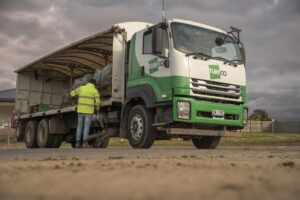
Thickness of Turf
Knowing the thickness that the turf will be is important so that your finished lawn sits flush with surrounding surfaces and is at the height you desire upon completion.
When turf is cut, the thickness can vary due to a few factors. Factors such as machinery, location, the type of turf, and weather surrounding the time of harvesting on the farm can all impact the thickness of the turf. As a rough guide, turf will usually be cut between 30mm to 35mm thick.
Moisture Content
When your turf is delivered, the amount of moisture that is in the turf can vary. Factors such as location & current weather conditions including rain, wind, and humidity levels can all affect moisture levels. This moisture level will not affect the turf quality and won’t hinder the turf during its establishment. Once the turf is laid, watering should commence immediately. This will provide the moisture required to maintain health and for establishment to begin.
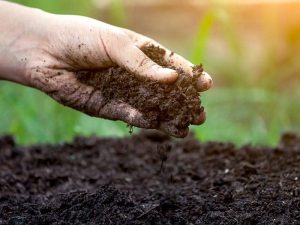
Muddy Turf
When you receive your turf, you may notice that there may be a bit of mud sitting on the leaf blade. This can be common if you are receiving turf after we (the turf farm), have received rainfall. If your turf is delivered with a bit of mud on the leaf blade, simply wash it off the leaf back into the soil profile.
Soil Base
The soil attached to your turf can vary depending on the seasonal conditions. The more moisture in the soil, the ‘stickier’ it will tend to be. This will allow it to hold to the turf better. If it’s too wet however, some soil/mud can be displaced from the turf, too dry and it can crumble and fall away also. These changes will not affect the quality of the turf, it will still establish correctly once laid and perform as it should.
Sometimes turf can be supplied with a thick amount of soil. This creates its own micro-growing conditions for the turf while it’s yet to establish its roots. In sports turf situations, the preference is actually to have no soil attached to the turf at all. Once harvested the turf is washed to remove all the soil before it is delivered to the site. This ensures there is no soil contamination and even quicker establishment, both of which are critical in that situation.
In the home lawn, great results will be achieved for establishment of whichever thickness or soil composition is supplied.
Considerations Regarding Temperature
Throughout different times of the year, the turf can dry out at different rates once harvested. Throughout summer when the temperatures are at their hottest, the turf can begin to dry and heat up. When temperatures are cooler throughout winter, the turf will still dry out but at a slower rate than it would in warmer months while remaining at a lower temperature.
Turf typically has a shelf life once harvested of 24-36 hours in the warmer months.
While it may last longer during the cooler months or conditions, it is still best to lay your turf as soon as it is delivered, regardless of the time of year. After your turf has been laid, it is best to apply water straight away and continue to do so 2-3 times per day until it establishes (water applications can vary depending on current weather conditions & the time of year).
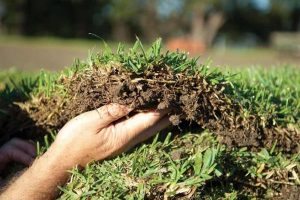
Dead or Discoloured?
Warm-season turf varieties like Zoysia, Kikuyu, Buffalo, or Couch, may lose a bit of colour in winter. This is no different for turf that is harvested and delivered during this time. We, as turf farmers can help offset this colouring in the cooler months by using a lawn pigment product like ColourGuard Plus, which you can also use to keep your lawn green over winter.
If turf is less green in winter, it does not mean your grass is unhealthy, it is simply dormant. The colour will return once the temperatures warm back up again in spring. This is much like buying a deciduous tree during winter.
Joining Lines in Turf
After you have installed your new lawn, you may see some joining lines between the turf. These lines can be more apparent as the edge of the turf roll can be under more stress where the roll has been cut. This is quite normal and will disappear as your lawn establishes. When installing your turf, be sure to stagger the joints of the turf in a brickwork pattern. This will help the turf to establish quicker so that the joining lines disappear faster, and the turf has more stability.
If you have any concerns regarding your turf once it arrives, please contact us straight away. We will happily address any of these concerns and can provide specific insight into the variances that may be experienced.
As a Lawn Solutions Australia Member, Turfco is fully accredited and certified by the Australian Genetic Assurance Program for turf, AusGAP. This program has strict quality control measures and audits that are conducted on a regular basis, so you can be sure that your turf is produced to the highest of standards.
If you have any questions, please don’t hesitate to contact us.

